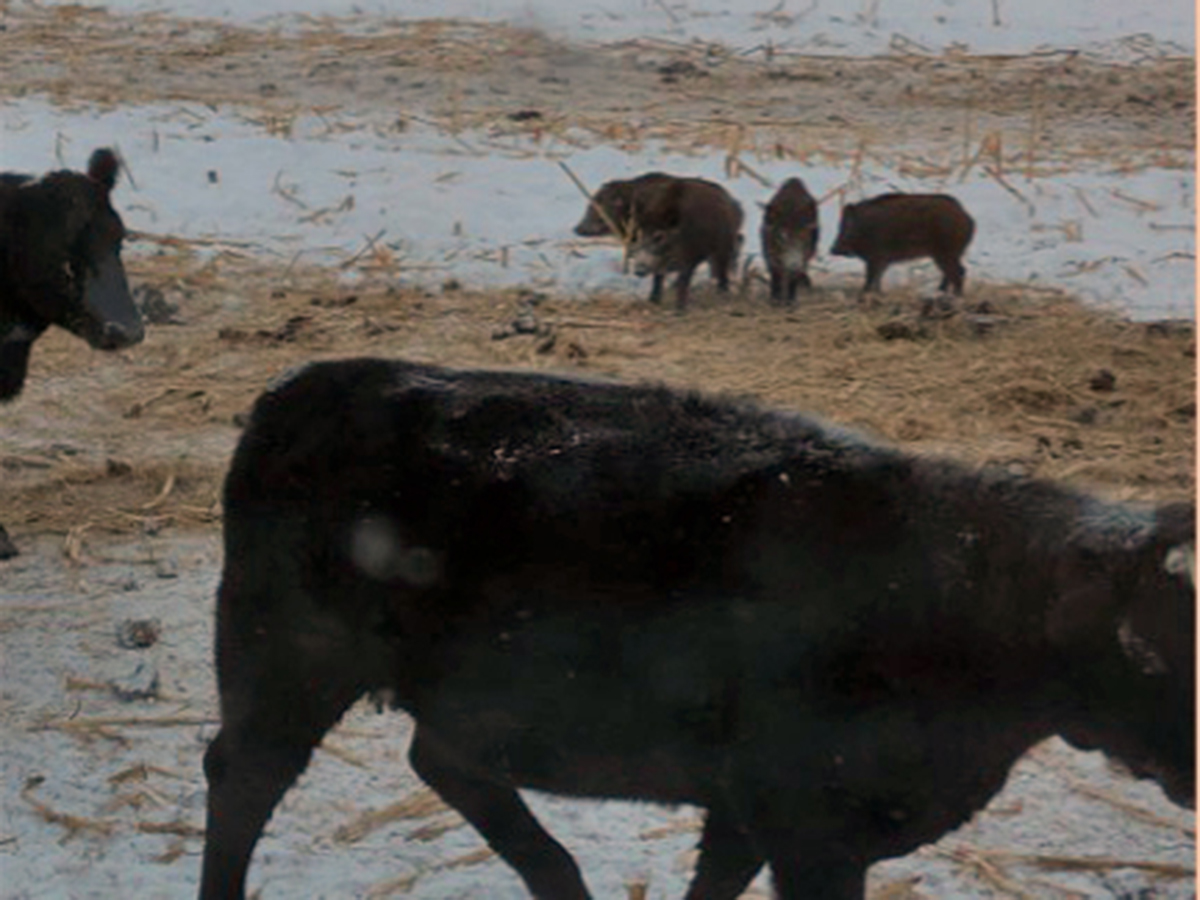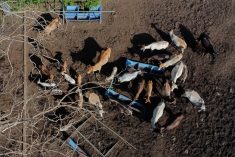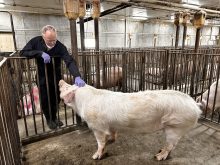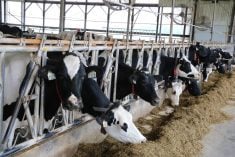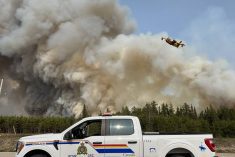Glacier FarmMedia – Efforts to control Manitoba’s wild pig population are ramping up, but the province’s situation differs significantly from the invasive pig crisis in the United States, says Wayne Lees, co-ordinator of Squeal on Pigs Manitoba.
Wild pigs are a real threat to animal and human health because they contaminate water with E. coli and other bacteria, damage natural habitats, uproot and trample crops and can carry up to 89 diseases
Unlike the southern U.S., where wild pig populations are booming, Manitoba’s pigs do not reproduce at nearly the same rate, and their overall numbers are believed to be much lower, Lees said. According to the U.S. Department of Agriculture, six million feral swine are spread over 35 American states.
Read Also

Canola oil transloading facility opens
DP World just opened its new canola oil transload facility at the Port of Vancouver. It can ship one million tonnes of the commodity per year.
“From our data, the average litter size is five to six piglets, but the range can be from three to 11,” Lees said.
“We don’t yet have the field data to know how often they can have a litter. Commercial pigs can have two litters per year, but we are questioning whether or not wild pigs can reproduce that quickly, given the limiting factors of feed availability and severe weather.”
Manitoba’s wild pig population primarily consists of escaped Eurasian wild boar and hybrid pigs. These animals are highly adaptable, but they face harsher conditions than their U.S. counterparts. Cold winters and deep snow present survival challenges, and researchers have found that their reproductive rates are lower than previously thought.
The rumours that have been circulating about “super pigs” in Manitoba are also not factual, Lees said. The province’s wild pigs are threat enough without this embellishment, he added.
“They’re a threat to the environment, they’re a threat to animal health and they’re a threat to human safety. They’re intelligent and well adapted, but we don’t have any sort of superpower to these pigs, and I think that’s really been unfortunate, that that narrative has taken hold.”
Squeal on Pigs Manitoba, which is funded through the federal-provincial Sustainable Canadian Agricultural Partnership program, operates differently from similar programs in other provinces, Lees said. Unlike government-run initiatives, the Manitoba program is managed in partnership with Manitoba Pork and relies heavily on collaboration with landowners.
That distinction has been an advantage when working with farmers and ranchers, Lees said.
“When we’re talking to landowners, we’re not coming across as a government official,” he said.
“We don’t have any regulatory enforcement powers…. Collaboration with the landowners is really key to our success.”
Squeal on Pigs Manitoba has been collecting data on population dynamics, using drones with thermal imaging, environmental DNA testing and extensive landowner surveys to track pig movements. The biggest challenge is actually finding out where the pigs are, Lees said, marking another difference between Canadian and American feral pigs.
“They’re hard to find. Whereas, if you go down to the States, they’re not hard to find,” he said.
Public reporting remains an important tool. The organization fields reports of pig sightings from landowners and residents and then follows up with on-the-ground assessments. However, many people have never seen a wild pig despite years of living in the province.
One of the key takeaways from Manitoba’s research is that recreational hunting is not an effective control method. Instead of reducing numbers, hunting tends to scatter groups, making them harder to track and trap, Lees said.
“What we found is that hunting just doesn’t work. Usually, when you go hunting, first of all, most people don’t see pigs. If they encounter pigs, it’s usually because they’re hunting something else, and they just happen to come across them.”
Most hunters are only two or three per cent successful in hunting these feral pigs, Lees added.
Squeal on Pigs’ trapping efforts focus on corral and net traps, set up with landowner co-operation. Once pigs are caught, they are humanely euthanized, and their remains are composted.
New technologies are making it easier for Squeal on Pigs to track and capture wild pigs, Lees said. Drones equipped with thermal imaging cameras are proving to be one of the most effective tools for locating pigs, particularly in areas where they would otherwise be difficult to detect.
The organization has also started developing environmental DNA testing, in partnership with Assiniboine College and BDx Enviro laboratories in Winnipeg, to detect pigs based on genetic material left behind in water sources.
“We’ve taken the protocol that was developed in the U.S. by the USDA but found it didn’t really work too well in our circumstance,” Lees said.
“So, we had to make modifications and do our own validation of the test.”
Lees believes that, unlike in parts of the U.S. where wild pig populations are entrenched, eradication is a real possibility in Manitoba.
“I think it’ll take some time and perseverance, but I’m pretty confident that we can get rid of them. I don’t think we have that many that we’re going to be overwhelmed, but we do need to get on top of these animals, especially in the hot spot, which is really Spruce Woods.”
To support this effort, Squeal on Pigs Manitoba continues to expand its research and surveillance capabilities. A national map of wild pig occurrences is in development, and ongoing studies aim to better understand pig behavior and movement.
While other provinces are running their own wild pig programs, Manitoba’s approach is considered one of the most advanced in Canada, Lees said.
“We are already collaborating with other provinces to share best practices and create a national map of wild pig activities.”
One major initiative on the horizon is a summit in April in Winnipeg that will focus on emergency management and foreign animal disease response. The event is expected to bring together government officials and industry experts to develop strategies for dealing with potential disease threats posed by wild pigs.
For Manitoba – and other Canadian provinces – to truly make positive steps toward solving the feral pig problem, organizations must move past alarmism and focus on solutions, Lees said.
“The data we’ve gathered shows that our situation is different from the U.S., and that’s a good thing. If we take the right approach, I believe we can eliminate wild pigs from Manitoba.”




